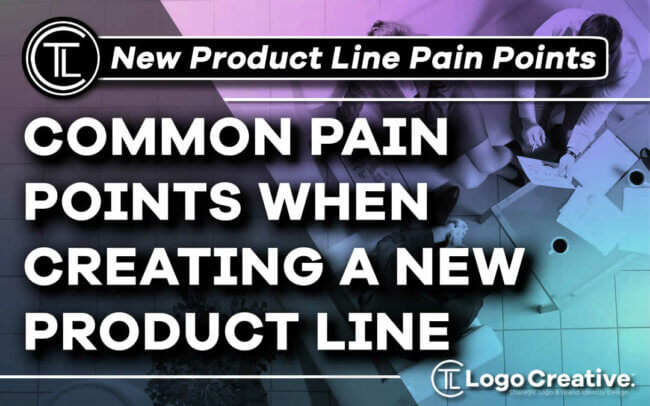Creating a new product line is exciting and filled with challenges. There are some common mistakes nearly all businesses encounter in the process. Knowing what they are can help you avoid issues and keep your project on track and on deadline. In this article we discuss Common Pain Points When Creating a New Product Line.
Since the pandemic struck, many businesses shifted their focus. New products may be geared toward essential items and meet changing consumer demands. Deloitte’s 2021 Global Marketing Trends Survey asked 405 C-suite executives what their thoughts were on the pressure they’re facing to develop new products.
There has been a huge drop in confidence among C-suite executives in the past year. Around 70% stated they value digital solutions more and understand the need to deepen the human connection with others.
Creating new product lines faces challenges never seen before. How can you identify pain points for your company and the consumer? Here are some of the most common issues companies run into and what you can do to mitigate them before they become a catastrophe.
Table of Contents
1. Watch Finances
Although some lines of work continue with business as usual, other sectors of society struggle to keep up with demand. If you serve other businesses, you may find they struggle to keep employees or stay on top of demand. If you serve consumers, some may be reluctant to spend money and look to buy online essentials and save.
Identify your buyer personas and what their financial fears might be. Take the time to address each of those issues. Does your product line meet their needs? Is the item affordable to your typical customer?
If you can’t develop a product at a rate your average client can afford, set it on the backburner for now and focus on creating other offers.
2. Find a Unique Name
Getting the name of a product right is vital to your future success. Not only are you competing with all the physical products on store shelves, but digital ones as well. Finding something unique requires creativity and determination.
Seek out something never used before but also define something unique about your product. Study beverage companies to learn how they come up with unique names and grab user attention. One example would be White Claw, which tells the user the ingredients are pure but have a bit of bite.
3. Make It Available
Have you ever heard about a new product on Shark Tank or a blog and wanted to buy it? Then, you find you can’t get it anywhere. Making your new product available to the masses isn’t as easy as it sounds. If you don’t have a contract with a big box retailer, you’ll run into a lot of walls.
Seek out places to showcase your products. Set up an e-commerce store so people can order online. Make sure you have enough inventory to meet demand or you can restock rapidly.
4. Share Ideas
In the early stages of product development, you need to do a lot of brainstorming with your team and the leaders in the company. You need the system to be able to shoot ideas back and forth and track what you’ve discussed.
Look for communication tools such as Slack where you can all throw in your two cents and have a record of what’s discussed.
5. Create a Prototype
Perhaps you have the most amazing idea anyone ever thought of for a new product, but you haven’t tested the idea. It might fall flat, require engineering expertise or lack the current technology to function the way you’d like.
Enter 3D printers to the rescue. Companies can buy a rather affordable one these days, print out a prototype, test it and refine the design before going to manufacture.
The 3D printing market is about $13.78 billion with a growth rate of 21% annually through 2028. The process is much faster than other methods, allowing you to tweak on a daily basis until you perfect the product line.
6. Gauge Reaction
You can go through every point of developing a new product line and still misjudge consumer reaction to a product. It’s hard to know how well received something might be until it’s completed. Use prototypes and testing groups to find out consumer reaction.
Get feedback and implement changes before going to full-scale production. What do consumers hate about the product? What breaks or doesn’t work as intended? You’ll be surprised at the ideas you’ll gather from those who use the item as intended.
7. Making an Emotional Connection
No matter how amazing your new product is, if people don’t have a solid reason to part with their money, they won’t buy it. Think through the pain points your customers face. What drives them to seek a solution?
Tap into the emotions behind the pain point and connect with users by tapping into those feelings. Explain how your product solves things.
8. Forecast Delivery Timelines
Maybe you’ve been in business for decades and know which logistics work best. However, many new product lines come from start-ups. You may not know how to predict delivery times or get product from Point A to Point B as quickly as possible.
Use your vendors as an excellent source of information. Test their delivery methods to see how long it takes for an item to arrive at different locations. Work to reduce shipping costs and keep profits high.
Asking for Feedback
Once you launch your new product line, you’ll hit snafus. Some of your biggest pain points come after the successful release of new items. Ask for feedback from your customers and make any needed adjustments. Pay attention to complaints. If one person complains about an issue with a product, you can be certain others had the same problem and didn’t say anything.
Seek ways to improve and each new product line will be a bit more successful than the last. Over time, you’ll develop a reputation for excellence.
Join The Logo Community
We hope you have enjoyed this article about the Common Pain Points When Creating a New Product Line.
If you would like more personal tips, advice, insights, and access to our community threads and other goodies, join us in our community.
Learn from our Founder Andrew who personally writes our community newsletter. You can also comment directly on posts and have a discussion.
*TIP – We recommend Skillshare to learn online. There are tons of classes for everything including graphic design, web design, marketing, branding and business related courses. Get a free trial with our link and you won’t regret it Trust us!
 Author Bio
Author Bio
Eleanor Hecks is editor-in-chief at Designerly Magazine. She was the creative director at a prominent digital marketing agency prior to becoming a full-time freelance designer. Eleanor lives in Philadelphia with her husband and pup, Bear.


